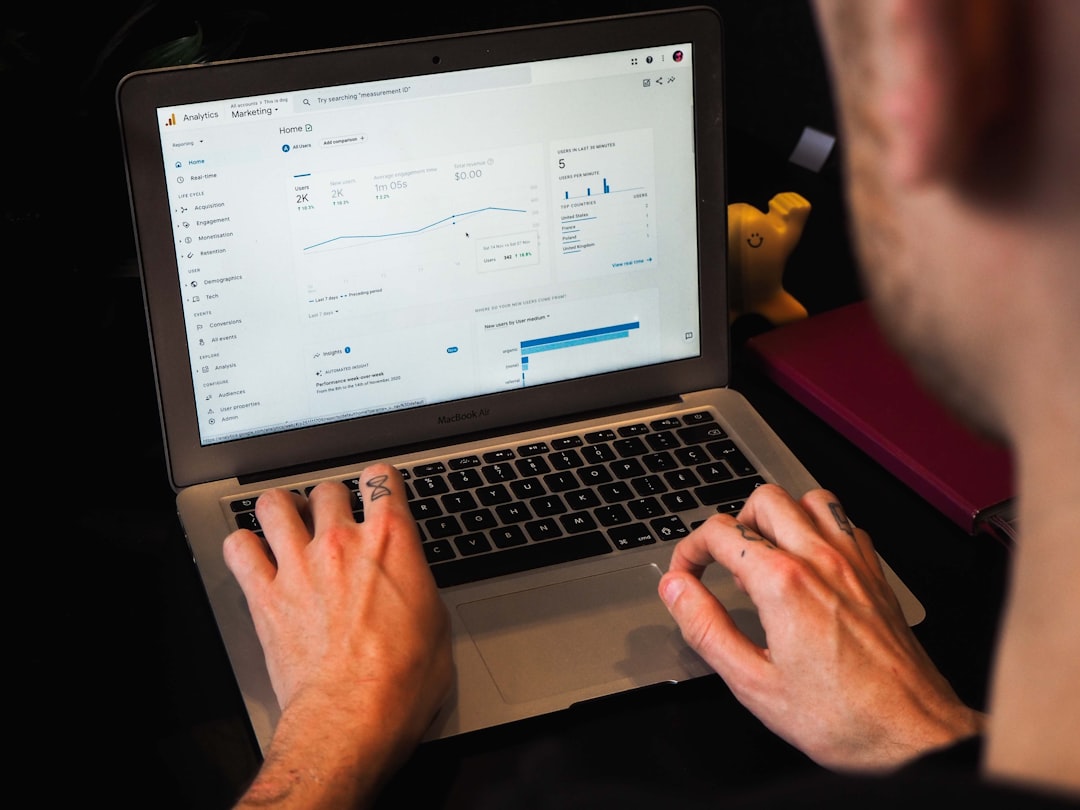In recent years, artificial intelligence (AI) has emerged as a transformative force across various industries, and social media is no exception. TikTok, the short-form video platform that has taken the world by storm, is a prime example of how AI can enhance user experience and content creation. As you scroll through your feed, you may not realize that behind the scenes, sophisticated algorithms are at work, curating content tailored to your preferences.
This intersection of AI and TikTok not only shapes what you see but also influences how creators develop engaging content that resonates with audiences. The rapid rise of TikTok has redefined the landscape of social media, making it essential for creators to understand the dynamics of viral content. With millions of users worldwide, the platform offers a unique opportunity for individuals and brands alike to reach vast audiences.
However, navigating this environment requires more than just creativity; it necessitates an understanding of the underlying mechanisms that drive engagement. As you delve deeper into the world of TikTok, you’ll discover how AI plays a pivotal role in shaping trends and facilitating content creation that captures attention.
Key Takeaways
- AI plays a significant role in the content creation and viral spread of videos on TikTok.
- Understanding the factors that contribute to the virality of content on TikTok is crucial for content creators.
- AI can assist in creating and optimizing content for maximum virality on TikTok.
- Content creators can leverage AI tools to analyze trends and create content that resonates with the audience on TikTok.
- Monetizing viral TikTok content is possible through brand partnerships, sponsored content, and other revenue streams.
Understanding Viral Content on TikTok
To grasp the essence of viral content on TikTok, you must first recognize the factors that contribute to its success. The platform thrives on trends, challenges, and catchy sounds that can quickly capture the imagination of users. When you create or engage with content that aligns with these trends, you increase your chances of going viral.
The key lies in understanding what resonates with your audience and how to leverage those insights to craft compelling videos. Moreover, TikTok’s algorithm is designed to promote content that garners engagement, such as likes, shares, and comments. This means that even if you have a small following, your content can still reach a broader audience if it strikes a chord with viewers.
As you explore the platform, pay attention to the types of videos that gain traction and consider how you can incorporate similar elements into your own creations. By analyzing successful content, you can develop a keen sense of what makes a video shareable and engaging.
The Role of AI in Content Creation

AI’s influence on content creation extends far beyond mere analytics; it actively shapes the creative process itself. For instance, AI tools can assist you in generating ideas for videos by analyzing trending topics and popular formats. By tapping into these resources, you can streamline your brainstorming sessions and focus on producing high-quality content that aligns with current trends.
This not only saves time but also enhances your ability to connect with your audience. Additionally, AI can help refine your editing process. With advanced algorithms capable of automating tasks such as video stabilization, color correction, and sound enhancement, you can elevate the production quality of your TikTok videos without requiring extensive technical skills.
This democratization of content creation allows anyone to produce professional-looking videos, leveling the playing field for aspiring creators. As you embrace these AI-driven tools, you’ll find that they can significantly enhance your creative output and overall effectiveness on the platform.
Leveraging AI for Viral TikTok Content
To truly harness the power of AI in creating viral TikTok content, you need to adopt a strategic approach. Start by utilizing AI-driven analytics tools that provide insights into audience behavior and preferences. These tools can help you identify which types of content resonate most with your target demographic, allowing you to tailor your videos accordingly.
By understanding what works and what doesn’t, you can refine your content strategy and increase your chances of going viral. Moreover, consider using AI-generated suggestions for captions and hashtags. Crafting the perfect caption can be challenging, but AI tools can analyze successful posts to recommend phrases that are likely to engage viewers.
Similarly, selecting the right hashtags is crucial for maximizing visibility; AI can help you identify trending hashtags relevant to your content. By integrating these AI capabilities into your workflow, you can create videos that not only capture attention but also reach a wider audience.
Monetizing Viral TikTok Content
Once you’ve successfully created viral content on TikTok, the next step is monetization.
One popular method is through the TikTok Creator Fund, which compensates creators based on their video performance and engagement metrics.
To qualify for this fund, you’ll need to meet specific criteria, including follower count and video views. As you build your presence on TikTok, keep an eye on these requirements to maximize your earning potential. In addition to the Creator Fund, consider exploring brand partnerships and sponsored content opportunities.
Brands are increasingly turning to TikTok influencers to promote their products or services, recognizing the platform’s unique ability to engage younger audiences. By cultivating a strong personal brand and demonstrating your influence through viral content, you can attract sponsorship deals that align with your values and resonate with your audience. This not only provides financial rewards but also enhances your credibility as a creator.
Potential Challenges and Limitations

While the integration of AI into TikTok content creation offers numerous advantages, it is essential to acknowledge potential challenges and limitations. One significant concern is the risk of over-reliance on AI tools. While these resources can enhance creativity and efficiency, they should not replace your unique voice and perspective as a creator.
Additionally, the fast-paced nature of TikTok trends can pose challenges for creators trying to keep up. What goes viral today may be forgotten tomorrow, making it essential for you to stay agile and adaptable in your content strategy.
Relying solely on AI-generated insights may lead to missed opportunities if you’re not actively engaged with the platform’s evolving landscape. To navigate these challenges successfully, remain proactive in monitoring trends while using AI as a supportive tool rather than a crutch.
Best Practices for Using AI in TikTok Content Creation
To maximize the benefits of AI in your TikTok content creation journey, consider implementing several best practices. First and foremost, stay informed about the latest advancements in AI technology relevant to social media. As new tools emerge, they may offer innovative features that can enhance your creative process or improve audience engagement.
By staying ahead of the curve, you’ll be better equipped to leverage these advancements effectively. Another best practice is to combine AI insights with your intuition as a creator. While data-driven recommendations are valuable, they should complement rather than dictate your creative vision.
Trust your instincts when developing content ideas and experimenting with different formats. This balance will help you maintain authenticity while still benefiting from AI’s analytical capabilities.
Conclusion and Future Trends
As you navigate the ever-evolving landscape of TikTok and artificial intelligence, it’s clear that these two forces will continue to shape the future of content creation. The integration of AI into social media platforms is likely to deepen, offering even more sophisticated tools for creators like yourself. From enhanced analytics to automated editing features, the possibilities are vast.
Looking ahead, anticipate a growing emphasis on personalization in content delivery driven by AI algorithms. As platforms strive to provide tailored experiences for users, creators will need to adapt their strategies accordingly. Embracing this change will be essential for staying relevant in an increasingly competitive environment.
In conclusion, understanding how to leverage AI effectively in your TikTok content creation journey can open doors to new opportunities for engagement and monetization. By combining technology with creativity and authenticity, you can carve out a unique space in this dynamic platform while navigating its challenges with confidence. The future is bright for those willing to embrace innovation while staying true to their creative vision.
FAQs
What is AI?
AI stands for artificial intelligence, which refers to the simulation of human intelligence in machines that are programmed to think and learn like humans.
What is TikTok?
TikTok is a social media platform for creating, sharing, and discovering short music videos, often featuring lip-syncing, dancing, and other forms of creative expression.
How can AI be used to create viral TikTok content for monetization?
AI can be used to analyze trends, user behavior, and engagement metrics on TikTok to identify content that is likely to go viral. It can also be used to generate and optimize content based on these insights, increasing the likelihood of monetization through views, likes, and shares.
What are the benefits of using AI for creating viral TikTok content?
Using AI can help creators and marketers save time and resources by automating the content creation and optimization process. It can also improve the accuracy of content predictions and increase the potential for monetization.
Are there any limitations to using AI for creating viral TikTok content?
While AI can provide valuable insights and assistance, it is not foolproof and may not guarantee viral success. Additionally, it is important to consider ethical implications and user privacy when using AI for content creation and monetization on social media platforms.




